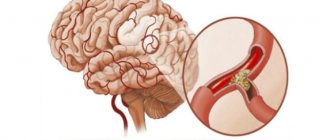Vagotonia is one of the types of vegetative-vascular dystonia. This is a condition of the body that is caused by excessive tone of the vagus nerve. It is he who regulates the activity of blood vessels, endocrine glands and various internal organs. Therefore, any violation of its functions immediately affects the human condition.
Diagnosis of VSD of the vagotonic type is difficult because it has a large number of symptoms that also apply to other diseases. Diagnosis is also complicated by the fact that the signs of vagotonia are in many ways similar to serious diseases of the lungs, cardiovascular and endocrine systems. If the patient is not monitored in a timely manner and regular examinations are not carried out, somatic disorders and mental disorders may develop.
Causes of vagotonia
One of the main causes of vagotonia is an increase in the tone of the vagus nerve (paired). The state of smooth muscles, slowing down (accelerating) the heartbeat, and increasing the activity of the digestive organs and stomach depend on it.
It cannot be said that there is one determining reason that causes such a condition in a patient: these are several factors that simultaneously affect the body and cause such a condition in the patient.
Patients diagnosed with vagotonia are mostly children and adolescents, with a growing body and a fragile nervous system. But now more and more often this diagnosis is given to adults, as the rhythm and lifestyle change. People are increasingly exposed to stress, increased emotional and physical stress. A sedentary lifestyle and poor nutrition also contribute to the development of pathologies.
Important! Vagotonia in adolescents is associated with hormonal changes in the body and immaturity of the nervous system. In women, it can be triggered by pregnancy, the postpartum period, or the body’s preparation for menopause - conditions that also depend on hormone levels.
In most cases, the diagnosis of “vagotonia” is made by exclusion, since examination of the lungs, heart and brain shows no significant abnormalities. At the same time, the patient continues to complain of dizziness (hypotension), bradycardia, and other dyspeptic disorders. In such cases, the doctor may suspect dysfunction of the autonomic nervous system and make a preliminary diagnosis of “VVD of the vagotonic type.”
According to statistics, signs of vagotonia are more often observed in women (2 or more times). The onset is observed closer to adolescence, and at the age of 20-30 years there is a persistent disruption of the autonomic system.
The most likely signs of VSD of the vagotonic type:
- Suffered TBI: concussions, hypoxia, injuries received during childbirth;
- stress, emotional turmoil, overload;
- respiratory function disorders;
- low physical activity;
- chronic infectious diseases;
- sudden climate change;
- hereditary factor;
- diabetes mellitus, metabolic disorders;
- increased intracranial pressure;
- hormonal imbalances.

Causes of vagotonia
The vagus nerve (paired) goes from the brain to the organs of the chest and abdominal cavity. It carries not only motor and sensory fibers, but also vegetative ones, which provide impulses to the lungs, digestive system, glands, and heart. An increase in its tone provokes a spasm of smooth muscles, increased motor activity of the intestines and stomach, and a slowdown in heartbeat, which is what is observed with vagotonia.
There is no single cause that causes vagotonic disorders. As a rule, this is a whole complex of unfavorable factors affecting a person simultaneously. In a number of cases, hereditary predisposition and constitutional features have been noted, which “result” in vagotonia under the influence of external causes.
Women are susceptible to vagotonia several times more than the male population. The disorder may first appear in childhood or adolescence, and by the age of 20-40 it will acquire the character of a persistent and pronounced disorder. According to some reports, signs of vagotonia are found in more than half of all people on the planet.
The most likely causes of vagotonic syndrome are:
- Head injuries, concussions, intrauterine hypoxia and birth injuries;
- Increased intracranial pressure;
- Emotional overload, stress, strong and prolonged experiences;
- Functional disorders of the digestive and respiratory organs;
- Physical inactivity;
- The presence of chronic foci of infection;
- Metabolic disorders, diabetes mellitus;
- Heredity;
- Change of climatic zones;
- Age: children, teenagers, menopausal women.
Vagotonia in children is associated with the natural immaturity of some elements of nervous regulation, rapid physical growth and hormonal changes during adolescence, and in women it is often provoked by pregnancy and childbirth, and the onset of menopause. These conditions are not a disease, they are natural, but can manifest themselves as a variety of autonomic disorders.
Manifestations of vagotonic syndrome
The symptoms of VSD of the vagotonic type are very diverse. The patient’s suspicion that a more serious disease may be identified in the future and doctors are “not telling something” can lead him to depression, which will significantly worsen his psychological state. This causes anxiety and fear of the future in the patient, which in itself is a mental disorder.
The treatment of such patients is approached comprehensively, depending on the manifestation of symptoms. As a rule, consultations and examinations are necessary with a therapist, neurologist, endocrinologist, and sometimes a gastroenterologist or other specialized specialists.
The fragmentation of symptoms can cause multiple examinations. At the same time, bradycardia and dysfunction of the lungs or digestive organs do not disappear, and may periodically recur. For some patients, experienced therapists immediately offer consultations and, if necessary, further observation by a psychotherapist to improve their general condition. In some cases, the disorders disappear, but panic attacks or depression intensify - everything is very individual.
That is why, during the initial examination, the doctor must use clarifying questions to clarify the picture of the disease and avoid mistakes when prescribing treatment.
Vagotonia can occur in both mild and severe forms. Conventionally, it is divided into three types of flow:
- Paroxysmal – appearing against the background of frequent lack of sleep, stress, overwork;
- permanent;
- hidden.
Based on the number of systems involved in the pathology, the following forms of VSD are distinguished:
- Generalized – with a disorder of several systems and organs;
- systemic – when disturbances are observed in only one organ system (respiration, for example);
- localized - dysfunction of a single organ.
For VSD of the vagotonic type, the most characteristic symptoms are:
- From the cardiovascular system: bradycardia, low blood pressure, cardiac arrest;
- from the respiratory organs: shortness of breath, pseudoasthmatic attacks, lack of oxygen, coughing attacks;
- digestive organs: complete lack of appetite, belching, heartburn, nausea, constipation or indigestion;
- on the part of the brain: headaches, heaviness in the head, apathy, depression, panic attacks, impaired concentration, etc.;
- vestibular system: frequent dizziness, lightheadedness or fainting.
Important! In many cases, VSD of the vagotonic type is accompanied by sleep disturbances and insomnia. As a result, absent-mindedness, fatigue, hypotension, and daytime drowsiness appear.
With vagotonia, patients experience unhealthy pallor, cold extremities due to impaired blood flow, sweating and weight gain due to a decrease in the amount of food consumed. The patient is determined to undergo examination and treatment, and also tries to convince doctors that he is suffering from an incurable disease. He describes all the symptoms accurately and in detail, thereby bringing himself to a state of deep depression. Particularly impressionable people are capable of suicidal ways of solving a problem.

Symptoms
Against the background of inhibition of the parasympathetic system, the patient experiences high fatigue, memory impairment, depressive moods, drowsiness and apathy. In addition, the patient suffers from the following manifestations of autonomic dysfunction:
- low blood pressure;
- pain in the chest and heart;
- swelling under the eyes;
- sweating;
- shortness of breath;
- slow heartbeat;
- frequent relaxation of the urinary sphincter;
- pain in the legs that appears at night;
- dizziness;
- “marbled” leather;
- increased salivation.
Dystonia of the vagotonic type makes a person weak, he develops fears, and he cannot carry out full-fledged studies and work. Attacks are often accompanied by headaches, vegetative-vascular dystonia does not allow relaxation, the patient is surrounded by constant anxiety and fear. The course of this type of illness often makes you fear for your life.
At the same time, existing problems cannot harm the patient; they are associated only with stress in life and neurosis.
Treatment of VSD according to the vagotonic type
The treatment is initially based on non-drug methods aimed at normalizing well-being. Medicines are resorted to only in cases where all methods turned out to be ineffective and did not lead to the expected result.
Important! Treatment of VSD of the vagotonic type is selected by the doctor individually. Prescriptions depend on age, complaints received, and concomitant diseases.
It is necessary to begin treatment with simple, effective corrective methods:
- Compliance with the daily routine;
- normalization of nutrition;
- increasing physical activity;
- supporting the body with drugs of natural origin;
- treatment of concomitant diseases.
Normalization of sleep. One of the most important conditions for improving your condition. The patient must sleep at least 10 hours a day.
Diet and proper nutrition. Review your diet: include enough vitamins and minerals. Don't limit your drinking - include enough tea, coffee, chocolate. At night, shortly before bed, consume honey, compotes and decoctions of rose hips, sea buckthorn, and viburnum fruits.
Physiotherapy. Improves the overall tone of blood vessels and the body. Visiting the pool, gymnastics, and yoga are recommended. Strength and traumatic sports are not recommended.
Physiotherapy. Electrophoresis with a solution of caffeine or mesatone well normalizes the state of the autonomic nervous system. Recommended for hypotension and bradycardia.
No less effective for hypotension will be a massage of the back, neck, hands and feet. In many cases, patients experience good results after a course of acupuncture.

Vegetative-vascular dystonia: prevention
To reduce the symptoms of such a phenomenon as autonomic dysfunction, it is worth remembering about prevention. The following rules apply:
- People experiencing symptoms of VSD should move. During physical activity, lactic acid is produced; it is necessary for the full functioning of the body. However, patients with a diagnosis such as vegetative-vascular dystonia often avoid any physical exercise due to their condition. But they desperately need it!
- This also includes constant work on oneself and intellectual activity. It is dangerous to feel sorry for yourself and not take action to get rid of the disease. But patients who have vegetative-vascular dystonia often look for a solution to the problem in medications. However, various doctors do not find any symptoms of serious diseases in them.

It is also important to avoid stress, normalize the daily routine, and create a peaceful environment for active activity and relaxation.
We recommend watching:
We recommend reading:

Pedophobia or fear of children
Previous article

Breathing problems with VSD
Next article
Drug treatment
If no improvement occurs after following all the instructions, medication is recommended. The most common of them:
- Sedatives containing valerian, sage, motherwort;
- antidepressants and tranquilizers to relieve anxiety and normalize sleep;
- neuroleptics – for panic attacks, depression, hypochondria;
- nootropic drugs to improve metabolism in nerve tissues;
- diuretics to improve and normalize blood circulation in the brain;
- B vitamins, preparations high in potassium and magnesium.
- antioxidants and vitamin complexes to strengthen the body and improve general condition;
- for hypotension and bradycardia, caffeine, tinctures of Eleutherococcus, and ginseng are prescribed.
For complete recovery and maintaining good health, vagotonic patients need understanding and comprehensive support and help from loved ones, complete trust in the attending physician and psychotherapist. If you do not follow the instructions and do not pay proper attention to your health, vagotonia can cause serious diseases.
Proper nutrition, a measured lifestyle and the exclusion of stressful conditions from life contribute to the normalization and restoration of autonomic tone.






